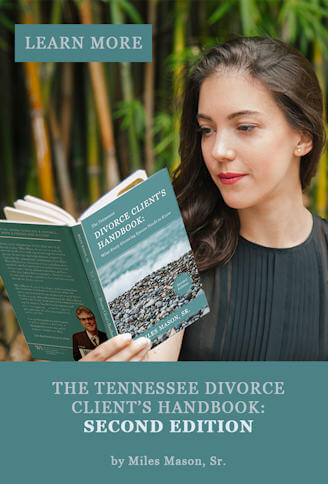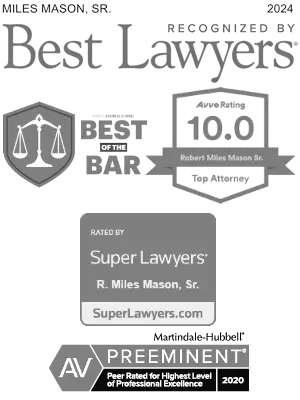Division and Valuation of Pension Interests in Tennessee Divorces
An introduction to valuation of a pension interest and division as marital property.
As retirement benefits have become one of the most important tools employers possess to attract valued employees and promote corporate personnel stability, the percentage of divorcing parties’ net worth comprised of retirement benefits has also increased. In many divorces, retirement assets often account for more than seventy-five percent (75%) of net assets. Division of this category of asset is often misunderstood. A mistaken valuation resulting in a flawed settlement can cost a divorcing party a seriously altered lifestyle, especially during retirement. Valuation of pension interests are serious business.
Each retirement plan is unique. There are different valuation techniques. The quality of the valuation and the advocate’s ability to support and defend the chosen approach is directly proportional to the quality of the expert chosen. Valuation of pension interests is not an exact science, but an art. Statistics, actuarial tables, government reports, tax tables, and investment market knowledge all play important roles in the process. The number of professional pension valuators and books are more than one might imagine. Just type “pension valuation” or “pension valuator” in any search engine or Amazon.com and see for yourself.
Most pensions are divisible, but not all. A divorce attorney may rely upon the forensic economist or accountant to review the pension document to confirm that a given retirement asset is divisible. After a trial or settlement, if a pension is divisible, pensions are divided by means of a document known as a Qualified Domestic Relation Order (QDRO). The QDRO will be drafted by either lawyer, or an attorney specializing in pensions engaged by one or both of the lawyers, and will generally be entered as an order of the court within thirty (30) to sixty (60) days following entry of the Final Decree of Divorce. The requirements of QDRO’s are controlled by federal law regulating pensions. As for basic pension division law in Tennessee, we know that:
1. “Only the portion of retirement benefits accrued during the marriage are marital property subject to equitable division.” Cohen v. Cohen, 937 S.W.2d 823, 830 (Tenn. 1996).
2. “Retirement benefits accrued during the marriage are marital property subject to equitable division ‘even though the non-employee spouse did not contribute to the increase in their value.” Id. at 830.
3. “The value of retirement benefits must be determined at a date as near as possible to the date of the divorce.” Id.
4. “[M]arital property includes retirement benefits, both vested and unvested which accrue during the marriage.” Id. at 830 (Tenn. 1996) (interpreting Tennessee Code Annotated Section 36-4-121(a)(1)). When offering reasoning against the argument that unvested retirement assets are speculative and contingent upon actually being received by the earning spouse and thus should not be subject to division as a marital asset, the Court commented: “Even ‘vested’ retirements may be contingent upon the employee’s living until the age of retirement. Contingencies should be considered on the issue of method of distribution, perhaps, but not on the determination of classification.” Cohen, 937 S.W.2d at 830. This means even unvested pension benefits must be considered and divided as part of the divorce.
5. Pensions may be valued by one of two methods. A trial court is free to choose its own method and need not be constrained by mathematical precision. The method chosen must only be fair.
a. The Present Cash Value Method “requires the trial court to place a present value on the retirement benefit as of the date of the final decree. To determine the present cash value, the anticipated number of months the employee spouse will collect the benefits (based on life expectancy) is multiplied by the current retirement benefit payable under the plan. This gross benefit figure is then discounted to present value allowing for various factors such as mortality, interest, inflation, and any applicable taxes. Once the present cash value is calculated, the court may award the retirement benefits to the employee-spouse and offset that award by distributing to the other spouse some portion of the marital estate that is equivalent to the spouse’s share of the retirement interest.” Cohen, 937 S.W.2d at 831 (citations omitted). “The present cash value method is preferable if the employee-spouse’s retirement benefits can be accurately valued, if retirement is likely to occur in the near future, and if the marital estate includes sufficient assets to offset the award.” Cohen, 937 S.W.2d at 831 (citations omitted).
b. The Deferred Distribution or Retained Jurisdiction Method eliminates the need “to determine the present value of the retirement benefit. Rather, the court may determine the formula for dividing the monthly benefit at the time of the decree, but delay the actual distribution until the benefits become payable. The marital property interest is often expressed as a fraction or a percentage of the employee spouse’s monthly benefit. The percentage may be derived by dividing the number of months of the marriage during which the benefits accrued by the total number of months during which the retirement benefits accumulate before being paid.” Cohen, 937 S.W.2d at 831 (citations omitted). “This method has distinct advantages when the risk of forfeiture is great.”
A few words of caution. If a retirement asset’s monthly or quarterly statement lists a value, do not be fooled. Some “balances” may appear to be a valuation. Defined benefit valuation calculations for purposes of marital estate property division are not going to be the same as the value appearing on any statement issued by the asset manager. Also, understand that this process is not always a standardized process. Only trust experienced and trained professionals. Unfortunately, the victims of mistaken advice or poor judgment may never know what should or could have been.
Pension Valuation: Role of the Expert Witness
The expert testimony of a forensic economist or accountant is required for proper trial preparation when the valuation of a pension is at issue. Only through expert testimony will the evidence of the value of most defined benefit plans be admissible. Even though a pension can be legally divided without a valuation, the evidence of the valuation is required because the division of the balance of the marital estate will be materially affected. The more subtle opportunity for exploitation of an expert’s powerful skills arise, however, much earlier than trial.
First, the expert can help determine whether or not a pension or retirement asset can be divided. Some cannot. If an asset cannot be divided, property division must be considered carefully. Second, the forensic economist or accountant ascertains either a reasonable range or a specific present value for benefits due the former employee from the retirement asset. This provides useful information to the attorney and client from the very beginning. A skilled forensic economist or accountant provides valuable advice and insight, adding to the legal team’s expertise, often even discovering an issue or argument of which the lawyer might not be aware. When this occurs, more often than not, the value of this “extra weapon” offsets or exceeds the expert’s fees by providing additional negotiating leverage, whether or not the expert has been disclosed. Because of the expert’s obvious importance to successful litigation of divorces involving significant retirement assets, it is essential that the family lawyer have solid relationships with several forensic economists or accountants with exceptional reputations.
In general, forensic economists or accountants offer analysis consisting of several steps, assisting at all phases of the litigation. First, the expert may develop a ball park present value, commonly described as a “quick and dirty,” to assist counsel and the client in the very beginning in understanding the scope of the engagement and the relative importance of the asset in relation to the entire marital estate. Sometimes, even before a complaint is filed, the expert can estimate the present value of the asset, enabling counsel to use the preliminary report for settlement purposes. Later, during the discovery phase, the expert may then interview the client, really focus on the detail, and begin to prepare the formal report. Then, if and when settlement opportunities become exhausted, the formal report can be issued, and preparation for deposition and trial begin. The economist or accountant can assist in the review of documents and the opposing party’s expert’s reports, helping the attorney develop deposition questions. In the post-discovery settlement and pre-trial phase, the expert can assist in evaluating final settlement offers. Should the case go to trial, the expert will assist with trial preparations, including exhibits and cross-examination scripts. At trial, the forensic economist or accountant will present his report, testify in support of his position, and refute the opposing party’s expert’s position.
To learn more about valuation of pension interests, see The Forensic Accounting Deskbook, by Miles Mason, Sr. JD, CPA. To learn more about handling pension interests in divorce from start to finish, see The Complete QDRO Handbook.
When retaining a forensic economist or accountant, the attorney will check with the economist or accountant for conflicts of interest and prepare or review a written agreement concerning the scope of the work, fees, expenses, and retainer. For more information, see the web sites listed below. If the expert selected is a forensic economist, this person will be a member of at least one of the following associations:
Certified Public Accountant (CPA)
Certified Financial Planner (CFP)
Certified Valuation Analyst (CVA)
For more information, please see the following important pension valuation resources on the Internet:
Social Security Administration
Frequently Requested Tables from the Statistical Abstract of the United States
National Association of Forensic Economics
These organizations have excellent web sites with an extraordinary amount of helpful information about resources, the profession, trends, and sub-specialties.
For more information about pension valuation and dividing pensions, see More on Pension Valuation & Division in Tennessee Divorce.











